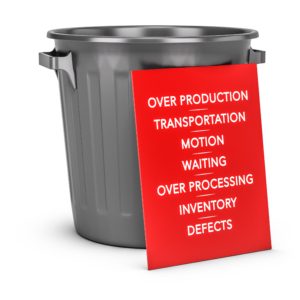
Fundamental to Kaizen continuous improvement is the philosophical belief that everything can be improved. When using this approach, incremental changes gradually add up to substantial changes over the long term. Change and implementing improvements occur in an organization and its business processes via various routes.
These routes may be:
Some types of change inevitably require that a major project be undertaken. This normally means upheaval, big budgets, and months of hard work. A complementary or alternative approach to improve processes and systems would involve ongoing, more subtle changes. This approach results in gradual improvement and is often overlooked and undervalued. One way you could use to implement incremental continuous improvement is through kaizen. The word kaizen means “change (kai) for the good (zen)” and it originated in Japan. With Kaizen, incremental changes gradually add up to substantial changes over the long term. This continuous improvement process also means that radical innovation is not required. It is a much more employee-friendly and gentle way to implement the changes that must happen in every business as it grows and adapts to the environment.
As kaizen is not a specific tool but rather a philosophy, the approach is found in many process-improvement methods. These range from the use of employee suggestion boxes to Total Quality Management (TQM). All employees are responsible for identifying inefficiencies and gaps with kaizen. Everyone, at all levels in the organization, is expected to suggest where improvements can be made. This approach is proactive rather than the reactive process which happens when nonconformities are identified and then addressed. Kaizen’s aim is to improve safety, effectiveness, and productivity. Companies that follow the kaizen approach however also often unlock several other benefits. These include:
Muda is another Japanese term often associated with kaizen. It means waste. Kaizen is about decreasing waste by:
All the above will eliminate waste, resulting in cost savings that may convert losses into profits. Kaizen was originally developed to improve processes in the manufacturing environment. It is one of the elements attributed to Japan’s competitive success in manufacturing through low costs and high quality. However, the kaizen approach’s benefits can be achieved in many other working environments, both on a personal level and for your whole team or organization. Much of kaizen’s focus is on reducing “waste,” and this waste can take numerous forms:
We suggest using the following approach for the kaizen process for your continuous improvement process, either with your team or on your own:
As an individual, you can benefit from Kaizen quickly. Embracing it with a team will however take a concentrated effort.
These suggestions to help you to make kaizen work with a team:
The Kaizen mindset is a philosophy that promotes incremental continuous process changes that sustain a high efficiency level. It can help to improve the way you personally work by reducing or eliminating various types of “waste.” Kaizen can also be used across an organization-wide approach to harness suggestions and support from people at all levels. General participation can improve both satisfaction and morale, as well as costs, production numbers, and other hard measures. When used properly, the Kaizen approach will reveal the significant improvements small changes can make. It should be noted that the Kaizen approach does not replace NCR software ISO, but rather supplements it.